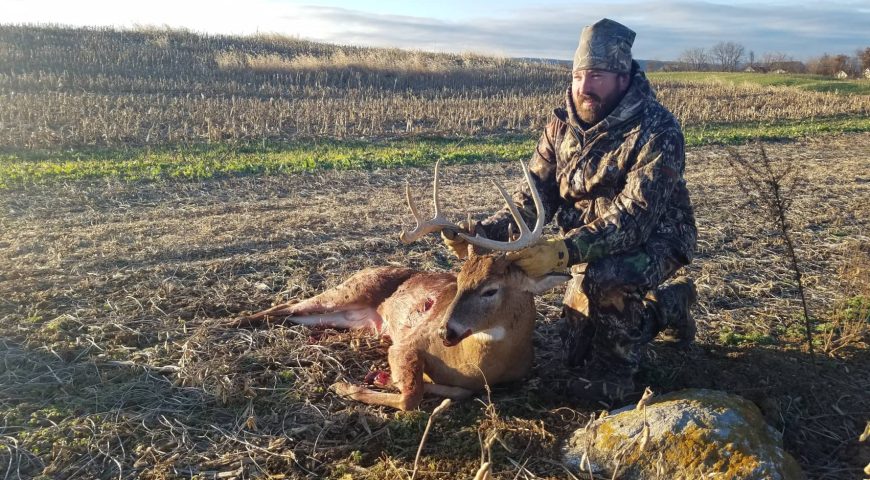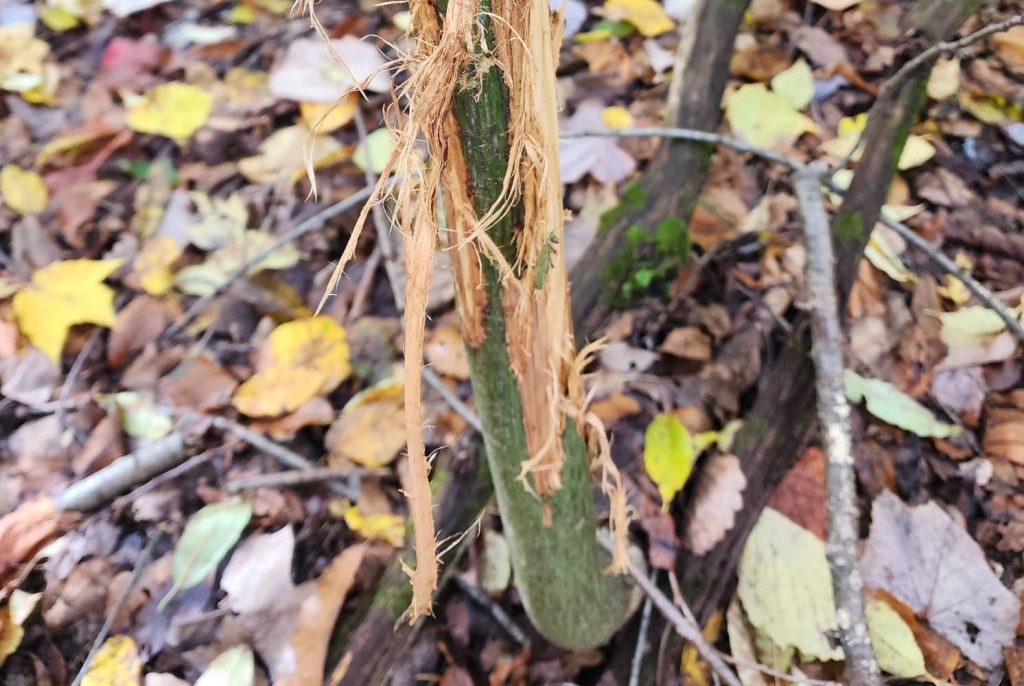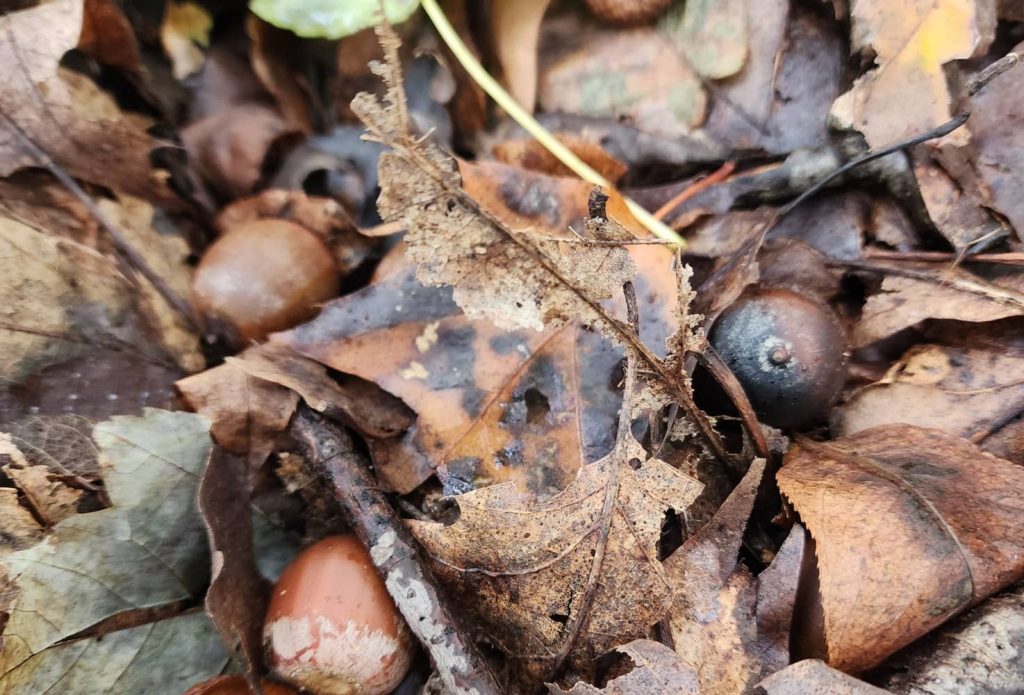
Maximizing Pre-Rut Whitetail Hunting Success: 3 Keys for Archery Hunters
Pre-rut whitetail hunting is a time when archery hunters get fired up. Mature bucks are starting to feel the rut approaching. In the transition between summer and the full rut, bucks become more active and start to establish dominance to prepare for the breeding season. This provides a perfect window for archery hunters to harvest a mature buck. Pre-rut whitetail hunting is a time of change and understanding key behavioral patterns can make the difference in your success. In this article, we will explore three key strategies that will help you capitalize on the pre-rut.
- Hunt Corridors and Staging Areas
- Scent is More Important in Pre-Rut Whitetail Hunting
- Early Mornings is the Only Time You Should Hunt
Hunt Corridors and Staging Areas
During the pre-rut, bucks start increasing their range as they look for does and assess competition from other bucks. They are more likely to move between bedding and feeding areas and explore new territories, but they haven’t yet become fully nocturnal like they often do later in the season. This increased movement makes travel corridors, funnels, and staging areas prime locations for pre-rut whitetail hunting.
Understanding Travel Corridors
Travel corridors are natural funnels that deer use to move between bedding areas, food sources, and watering holes. These corridors often include ridgelines, creek beds, or areas with dense cover. Bucks will typically use these routes during the pre-rut as they expand their territory and search for does. For archery hunters, setting up near these corridors in the early archery hunting season is essential. Bucks will be actively moving through these areas at dawn and dusk.
Staging Areas for Pre-Rut Whitetail Hunting
Staging areas are also highly effective during this phase. These are spots near food sources where bucks linger before moving into the open to feed. Bucks will often scent-check these areas before committing to a food source, especially as their testosterone levels increase. Setting up your stand near these staging areas can put you in an ideal position for a shot when a mature buck enters the zone.

Utilize Mock Scrapes and Scent Control
One of the most important aspects of pre-rut whitetail hunting is understanding the increase in testosterone among bucks. This change in behavior makes them more aggressive and territorial. They will begin creating scrapes and rubs to mark their territory and communicate with other deer. As an archery hunter, you can capitalize on this behavior by using mock scrapes and strategic scent control.
Mock Scrapes
Mock scrapes can be highly effective during the pre-rut. Bucks will check scrapes for the scent of other deer, especially does. By setting up a mock scrape in a high-traffic area or near bedding grounds, you can attract bucks to your location. Using synthetic buck urine or doe estrus scent can make your mock scrape even more attractive to mature bucks.
Mock scrapes should be placed near travel corridors or along the edges of fields where deer are likely to pass by. Consider using a licking branch to make your mock scrape more realistic, as bucks often rub their forehead glands on these branches while marking territory.
Pre-Rut Whitetail Hunting Scent Control
While scent can be an attractant, it can also give you away if not managed properly. In the pre-rut phase, bucks are extremely cautious and can detect even the slightest human scent. Always use scent-eliminating sprays and practice good hygiene before heading into the woods. Wearing scent-blocking clothing and positioning yourself downwind of your anticipated target area can also make a significant difference.
Capitalize on Early Morning and Late Evening Hunts
During the pre-rut, mature bucks are more likely to be on their feet during daylight hours, but this doesn’t mean they’re moving all day. Instead, they are most active during the early morning and late evening, particularly around feeding and bedding times. In contrast, mature bucks are often active all day during the main rut phase when breeding does are present. To be successful in pre-rut whitetail hunting, it is essential to target these high-activity windows.
Early Morning Strategy
In the pre-rut, bucks will often return to their bedding areas shortly after sunrise. This makes early morning hunts a prime time to catch them moving from feeding to bedding areas. The key is to get into your stand or ground blind before first light. Arriving early reduces the chance of spooking deer that might already be in the area. Positioning yourself along travel routes or just outside bedding areas is ideal during this time.
Late Evening Strategy
Late evening is another optimal time to target mature bucks. As the day winds down, deer become more active, moving toward food sources. Bucks will often check for does near fields, food plots, or acorn flats just before dark. A micro or budget-friendly food plot can be gold in the evenings. Setting up near feeding areas and using calls like grunts or bleats to simulate buck-doe interaction can be highly effective.

Pre-Rut Whitetail Hunting With TrophyTracks
Pre-rut whitetail tactics for archery season like the ones discussed above are only enhanced with on-the-ground data. A hunting app like TrophyTracks allows you to log preseason trail camera images and document buck movements. This allows you to narrow down which corridors bucks are using and if certain bucks are more active during the morning or evening. You can then use the predictive features of TrophyTracks PRO to decide which locations are likely to be productive on a giving hunt. The best pre-rut whitetail hunting strategy is to pattern specific areas. Without a hunting app to log observations, track trail cameras, and predict deer movements, it is almost impossible to hunt the best areas consistently.
Pre-rut whitetail hunting presents an exciting opportunity for archery hunters to harvest mature bucks before the full rut kicks into gear. By focusing on travel corridors, utilizing mock scrapes and scent control, and targeting high-activity windows like early morning and late evening, you can significantly increase your odds of success. As you prepare for your next hunt, keep these strategies in mind, and be ready to adjust as the pre-rut progresses. With patience and the right tactics, this phase of the season can lead to your most success time bowhunting.

